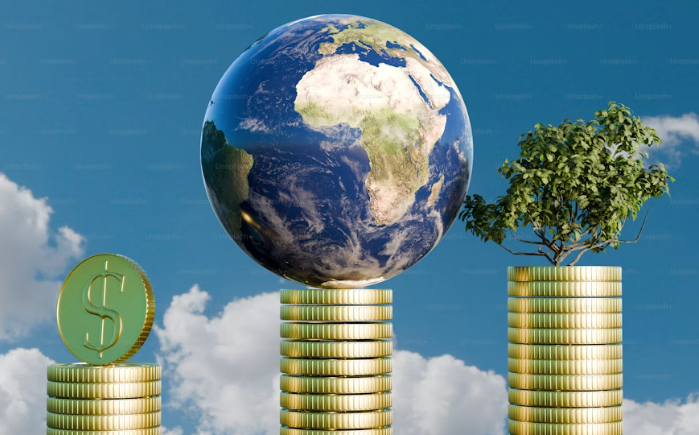Sustainable investing has gone from a niche trend to a key force shaping today’s financial markets. Rising climate threats, social inequality and global shifts have made sustainability the new benchmark for smart investing. Investors are now looking for profits with purpose, eager to build wealth that doesn’t cost the earth.
The race for higher returns once ignored environmental and social costs, but that approach no longer works. Demand for responsible investing is growing as people insist on results that include not just dollars and cents, but cleaner air, fairer jobs and stronger communities. Green finance sits at the heart of this shift, blending profit targets with ethical choices. It has already transformed how we judge risk, success and long-term value.

The Fundamentals of Sustainable Investing
Sustainable investing isn’t just about feeling good—it’s a focused strategy that evaluates companies by how they treat people, the planet and their own governance. This strategy uses ESG criteria—Environmental, Social and Governance factors—to judge where money should go. Investors want companies that act responsibly, because those firms are often more stable and prepared for future challenges.
The roots of sustainable finance can be traced back to ethical investing and socially responsible funds of the 1970s. What began as the desire to avoid “sin stocks” has expanded into a $40 trillion global market, spanning entire pension funds, mainstream banks and retail investors. People now see ESG as the standard, not just a specialty.
Understanding ESG Criteria
ESG stands for:
- Environmental: Looks at how a company manages waste, energy, carbon emissions, pollution and resources. Firms with cleaner operations tend to be better prepared for climate laws and public scrutiny.
- Social: Measures how firms treat workers, suppliers, customers and their communities. Fair wages, safe working conditions and positive local impacts win trust and loyalty.
- Governance: Focuses on leadership, board accountability, transparency and ethics. Strong governance reduces fraud and scandal risk.
These factors are scored through company reports, audits and independent ratings. Investors now demand data on ESG so they can see who walks the talk.
Key Drivers Behind the Rise of Green Finance
What’s fueling the surge in green finance? Several powerful trends:
- Climate change awareness: Wildfires, droughts and floods make the risks real, spurring calls for carbon reduction and resilient business models.
- New regulations: Rules in the US, Europe and Asia push companies to disclose ESG risks and meet higher standards—or pay fines.
- Changing consumer values: Investors want their money to do good. Younger generations, in particular, prefer brands and assets that align with their ethics.
- Tech breakthroughs: Solar, wind, energy storage and better data tools have made clean solutions affordable and easy to track. This opens the door to more impactful investing.
These drivers make green finance not just popular, but essential for those thinking about the next decade—not just the next quarter.
How Green Finance Is Reshaping Investment Profits
Traditional profit measures are changing fast. Where companies once measured success just by quarterly financials, sustainable investors look at long-term gains, reduced risks and robust reputations.
Research reveals that firms committed to ESG outperform their peers. Sustainable funds have shown they can weather storms better, attracting more capital and often delivering competitive returns.
Performance Comparison: Sustainable vs Traditional Investments
Let’s clear up a common myth—ESG funds don’t lag behind. In fact, the numbers show they often outperform:
| Investment Type | Average Annual Return (5-Year) | Volatility |
|---|---|---|
| ESG Funds | 10-12% | Lower |
| Traditional Funds | 8-10% | Higher |
Morningstar and BlackRock reports have found that sustainable funds, on average, beat traditional funds during volatile markets. By screening out risky businesses, such as those with high carbon exposure, ESG funds avoid sudden dips tied to lawsuits or pollution scandals.
Impact on Risk and Long-Term Value
Sustainable investing is also a smart way to control risk. By factoring in environmental threats, social unrest and poor governance, investors can sidestep landmines. For example, companies with strong climate policies are less likely to face heavy fines or business disruptions if laws tighten.
Risk isn’t just about the next year—it’s about the next decade. Integrating ESG into portfolios helps investors build resilience. This means less exposure to negative surprises and better odds of steady growth, even when the market wobbles.
Case Study: Notable Green Finance Success Stories
Some real-world examples show how sustainability pays off:
- Ørsted: Once an oil and gas firm, Ørsted shifted to renewable energy. Its stock value soared by over 250% in five years after focusing on wind power and cutting emissions. It is now a global leader in offshore wind.
- Tesla: Tesla’s bet on electric vehicles paid off, not only making it the world’s most valuable car company but also pushing the whole auto sector to rethink emissions and clean transport.
- Generation Investment Management: Co-founded by Al Gore, this fund manages $36 billion with an ESG-first strategy. It consistently beats average market returns by betting on climate solutions and responsible growth.
These examples show that you don’t have to give up profit for purpose. When companies innovate with an eye on ESG, they pull ahead—both financially and reputationally.
Conclusion
Sustainable investing is not just a passing fad—it’s reshaping the very definition of profit. By using ESG criteria, investors aren’t just chasing short-term gains but building portfolios that can stand up to the world’s toughest challenges. As data continues to show, green finance delivers strong returns while making a positive mark on society.
Choosing where to invest isn’t just a financial decision anymore; it’s an opportunity to shape the future. Every dollar and decision counts. With sustainable investing, profits and the planet go hand in hand.
How will you invest in tomorrow?